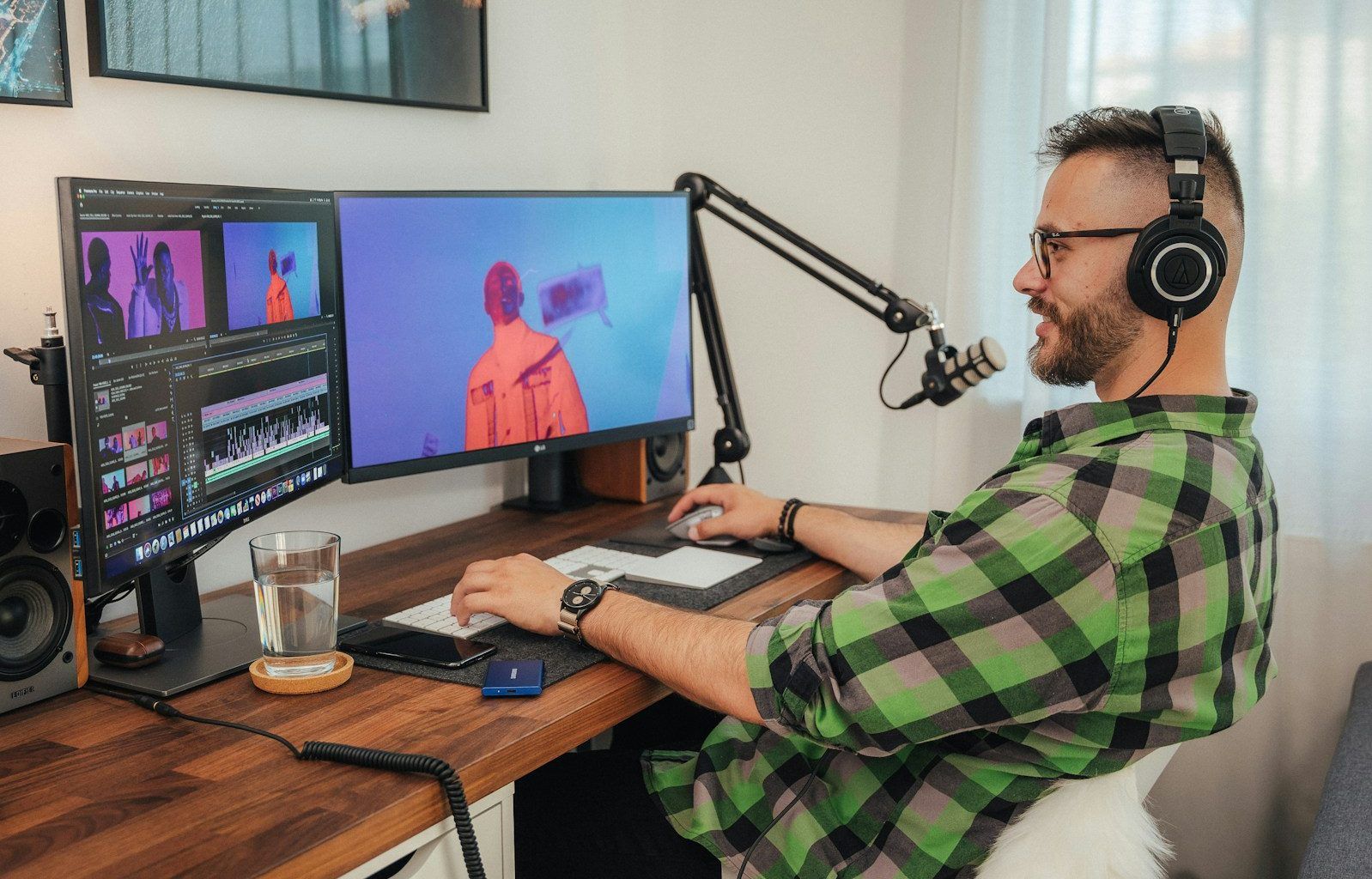The rise of music streaming platforms has completely changed how people listen to music. Services like Spotify, Apple Music, and YouTube have made it easier than ever to access millions of songs in just a few clicks. While listeners enjoy this convenience, artists face a different reality—getting paid for their music in this digital world isn’t always simple. One term you often hear when discussing music and money is streaming payouts. These are the payments artists receive from streaming services based on the number of times their songs are played. But how do these payouts actually work? Why do artists sometimes earn so little, even when their music is streamed thousands of times? In this blog, we’ll break everything down for you in plain and simple language.
Let’s dive into the world of streaming payouts and see how musicians can make the most of this new digital landscape.
What Are Streaming Payouts?
Simply put, streaming payouts are the royalties or earnings that musicians get when someone listens to their song on a streaming platform. Instead of selling music directly like CDs or downloads, streaming services allow users to listen to songs on demand. Every time someone plays a track, a small payment is generated for the artist.
However, it’s not as straightforward as it sounds. Streaming platforms don’t pay artists directly. Instead, they pay rights holders—these are the people or companies who own the music. Rights holders can be record labels, distributors, or the artists themselves, depending on how the music is published.
This means the actual streaming payouts an artist receives depend on several factors, such as how many rights holders are involved, what type of contract they have, and the platform’s payout rate.
How Do Streaming Platforms Calculate Payouts?
It’s important to understand that streaming platforms use a complex formula to calculate payouts. There’s no fixed rate for a single stream because the amount varies based on several elements:
- Platform Revenue: Streaming services earn money through subscriptions and ads. A portion of this revenue goes to artists.
- Listener Location: Payouts are higher in countries where streaming subscriptions cost more.
- Subscription Type: Premium subscribers generate more money per stream compared to free-tier listeners who rely on ads.
- Total Streams: Payouts are divided based on the total number of streams on the platform during a specific period.
For example, Spotify operates on a pro-rata model. All the money earned by the platform is pooled together, and artists get a share of this pool depending on how many times their songs are streamed compared to other songs.
This method has its challenges. If your music is streamed a lot but not enough to compete with the biggest artists on the platform, your streaming payouts may still be very small.
How Much Do Artists Really Earn Per Stream?
The earnings per stream can be surprisingly low. Let’s take a closer look at approximate figures for major platforms:
- Spotify: $0.003 to $0.005 per stream
- Apple Music: $0.007 to $0.01 per stream
- YouTube: $0.00069 per stream
- Amazon Music: $0.004 to $0.01 per stream
- Tidal: $0.012 to $0.014 per stream
These numbers are just averages and can vary based on the factors mentioned earlier. For example, if most of your streams come from countries with lower subscription costs, you might earn even less per stream.
Now, let’s do some quick math. If you earn $0.004 per stream on Spotify, you need around 250,000 streams to make $1,000. That’s a lot of streams for a relatively small payout.
Why Are Streaming Payouts So Low?
You might be wondering why streaming payouts are so low, even though streaming platforms are hugely popular. The main reason is the way revenue is shared. Out of the money earned by platforms, artists are only one part of the equation. Here’s where the money goes:
- Streaming Platform: A percentage of the revenue stays with the platform to cover operations and profits.
- Record Labels: If an artist is signed to a label, the label usually takes a significant cut.
- Publishers and Songwriters: The people who wrote and published the music also get a share.
- Distributors: These companies help get the music onto streaming platforms and take a portion of the earnings.
After all these parties take their share, the remaining amount goes to the artist. If you’re an independent artist, you might keep a larger share, but the payout per stream is still relatively small.
The Challenges Artists Face with Streaming Payouts
For artists, relying on streaming payouts alone can be challenging. Here are some of the main hurdles they face:
1. Low Pay Per Stream
As mentioned earlier, the amount paid per stream is very small. For most artists, it’s not enough to make a sustainable living.
2. Competition with Major Artists
Big-name artists with millions of streams dominate the platform’s revenue pool. Smaller artists find it hard to compete and earn a significant share.
3. Music Industry Middlemen
Artists who are signed to record labels often receive only a fraction of the payout after the label takes its cut. This makes it even harder for musicians to earn a fair amount.
4. Unfair Payment Models
The pro-rata model used by most platforms tends to favor the most-streamed artists. Smaller musicians often get overshadowed, even if their music has dedicated listeners.
How Can Artists Increase Their Streaming Payouts?
While streaming payouts are far from perfect, there are ways artists can maximize their earnings. Here are some strategies that can help:
1. Focus on Building a Loyal Fanbase
Instead of chasing viral success, focus on building a dedicated fanbase. Loyal listeners are more likely to stream your music regularly and support you through other means like merch and concerts.
2. Promote Your Music Strategically
Make use of social media, playlists, and collaborations to promote your music. The more streams you get, the more you earn.
3. Release Music Consistently
Streaming platforms reward consistency. Regularly releasing new music keeps you on your audience’s radar and increases your total streams over time.
4. Distribute Independently
If you’re able to manage your music career without a major label, consider distributing your music independently. This allows you to keep a larger portion of your streaming payouts.
5. Monetize Beyond Streaming
Streaming doesn’t have to be your only income source. Explore other ways to earn money, such as live performances, merchandise sales, and crowdfunding campaigns.
The Future of Streaming Payouts
The conversation about streaming payouts is far from over. Many artists and music industry professionals are advocating for changes to make payouts fairer. Some potential solutions include:
- User-Centric Payment Models: Under this system, listener subscriptions would be distributed based on what they actually listen to, instead of pooling all the revenue together.
- Higher Payout Rates: Platforms could increase the payout rate per stream to better support artists.
- Transparency: Greater transparency in how payouts are calculated would help artists understand and negotiate their earnings better.
As streaming platforms continue to evolve, it’s likely we’ll see changes that could benefit artists in the long run.
Conclusion
Streaming payouts are a complex but important topic in today’s music industry. While platforms like Spotify and Apple Music have transformed the way we consume music, they have also brought challenges for artists trying to make a living. Understanding how streaming payouts work, what influences them, and how to maximize earnings can help musicians navigate this landscape more effectively.
At the end of the day, streaming is just one piece of the puzzle. By combining streaming revenue with other income sources, artists can build sustainable careers while reaching fans all over the world. The key is to stay informed, adapt to changes, and continue creating music that resonates with listeners.
For further reading, explore these related articles:
For additional resources on music marketing and distribution, visit DMT Records Pvt. Ltd..






